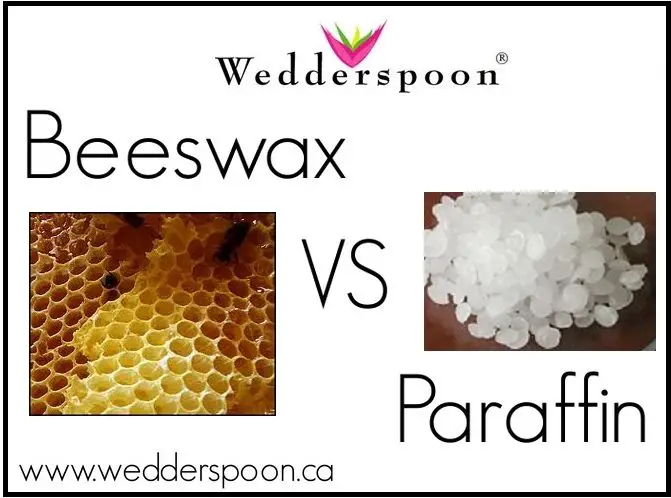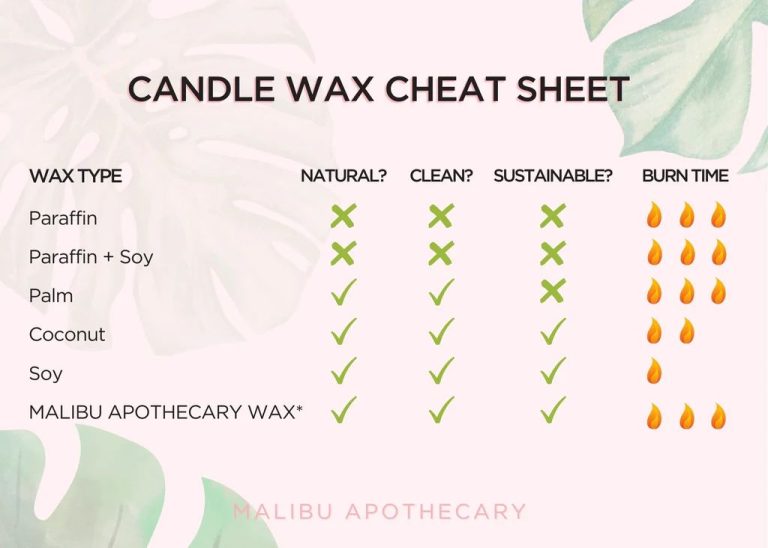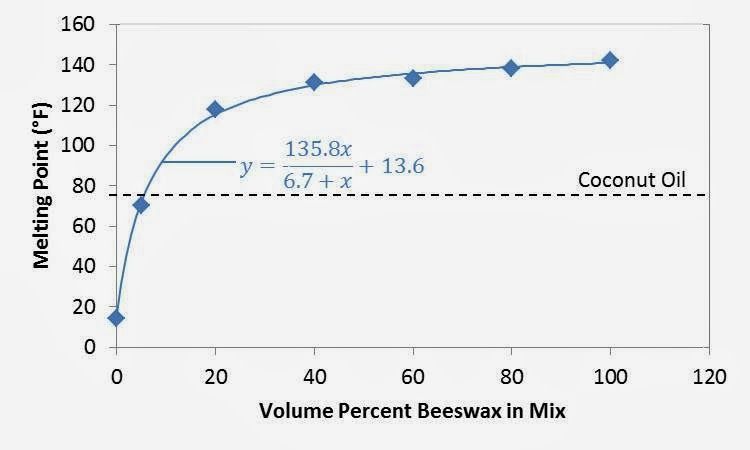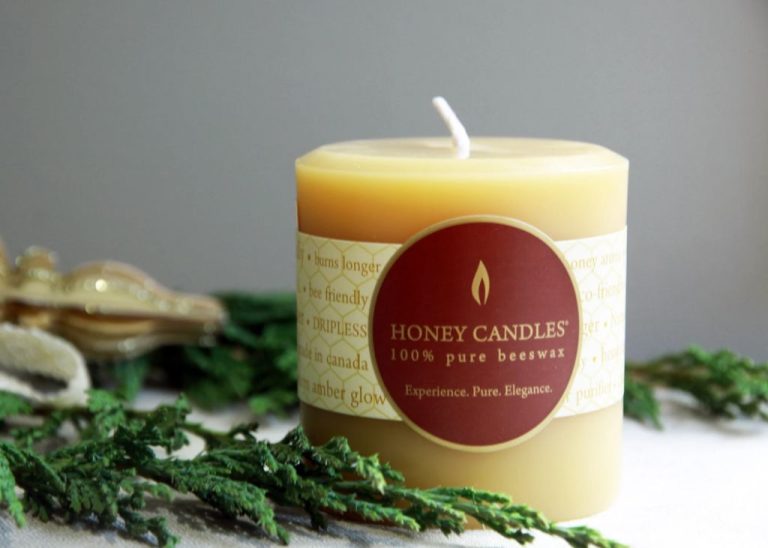When Not To Use Paraffin Wax?
Paraffin wax is a soft, colorless wax derived from petroleum. It has been widely used for over a century in applications like candle making, waxing, art, food preparation and more. Paraffin wax was first created in 1830 by Carl Reichenbach in Germany, marking a major advancement in candlemaking technology as it burned more cleanly than other materials like tallow. Its name comes from the Latin “parum affine” meaning lacking affinity, due to its inert nature.
Some of the key properties and uses of paraffin wax include:
- Soft, pliable texture makes it good for molding into candles, art casts, etc.
- Odorless and tasteless, so can be used in food prep.
- Melting point around 50–65 °C makes it suitable for chandlers and waxing.
- Water repellent properties help protect wood, leather, etc. when used in polishes or sealants.
- Electrical insulator, so used in some wiring applications.

With a long history and diverse uses spanning many industries, paraffin wax continues to be a versatile material today. However, there are some considerations around its use which will be discussed.
Health Concerns
There are some health concerns associated with using paraffin wax, especially when it is burned in candles. When paraffin wax burns, it releases compounds like toluene and benzene into the air, which can be harmful if inhaled (https://happywax.com/blogs/from-the-blog/7-health-issues-caused-by-paraffin-wax).
In particular, the smoke from paraffin candles can aggravate lung conditions like asthma. The toxins released can cause inflammation in the lungs and trigger asthma attacks or allergic reactions in some people (https://www.healthline.com/health/are-candles-bad-for-you). Those with respiratory issues like COPD may also experience worsened symptoms when exposed to paraffin candle smoke.
Additionally, some people find they develop headaches, nausea, or dizziness after breathing in the fumes from paraffin candles. The compounds released can irritate the nose, throat, and eyes as well (https://www.reddit.com/r/candlemaking/comments/s3wtpp/is_paraffin_wax_actually_bad_for_health/).
While more research is still needed, these potential health effects should be considered when deciding whether to use paraffin wax, especially around children or people with respiratory issues.
Environmental Impact
Paraffin wax is derived from petroleum, so it is considered a non-renewable resource. The extraction, refining, and disposal of paraffin wax can have negative environmental effects.
As a petroleum product, paraffin wax contributes to the depletion of oil reserves and perpetuates dependence on fossil fuels. Its production requires energy and creates greenhouse gas emissions. https://cosyowl.com/guides/the-truth-about-paraffin-wax-being-vegan-friendly
There are also concerns around the biodegradability and proper disposal of paraffin wax. Since it is a petrochemical, paraffin does not readily break down in the environment. Improper disposal can lead it to accumulate in landfills and waterways. https://www.frontiersin.org/articles/10.3389/fmars.2018.00094 This highlights the need for sustainable end-of-life solutions if choosing to use paraffin wax.
Overall, paraffin wax’s environmental impact makes plant-based waxes derived from soy, beeswax, and other renewable sources preferable alternatives for many applications.
Fire Hazard
Paraffin wax presents a significant fire hazard due to its highly flammable nature. When melted or heated, paraffin wax vaporizes quickly and the vapors can ignite at temperatures between 204-260°C (399-500°F) (Flinn). This means spilled melted wax or wax heated in a wax warmer can easily ignite. Paraffin wax also has a very low flash point of 204°C (399°F), which is the lowest temperature at which vapors can ignite with an ignition source (Flinn).
If water is poured onto burning melted paraffin wax, it can create an explosive wax-water fireball. This dangerous reaction occurs because the water sinks below the wax and instantly turns into steam, causing the flammable wax fumes to ignite above the water layer. This wax fire phenomenon is known as the “Leidenfrost effect” and can result in serious burns or property damage (Wikipedia).
In summary, extreme caution should be exercised when melting or boiling paraffin wax due to the high risk of accidental fires. Proper precautions like having a fire extinguisher on hand are highly recommended.
Candle Making
Paraffin wax is commonly used to make candles because it is inexpensive and easy to work with. However, paraffin wax has some significant downsides when used for candle making:
Paraffin candles produce a lot of soot when burned, leaving black residue on walls and surfaces. According to Artisane NYC, paraffin wax candles are the sootiest on the market. The soot is connected to the release of carcinogenic chemicals like benzene and toluene when paraffin burns [1]. The wicks also contribute to sootiness.
The texture and finish of paraffin candles is not as customizable or high-quality as natural waxes. Paraffin’s texture makes it harder to achieve visual effects like pooling or a smooth finish compared to alternatives like soy, beeswax, or coconut wax.
In summary, paraffin wax is not the best choice for candle making due to its tendency to produce a lot of soot and its limited customization options.
Waxing
Paraffin wax is commonly used for waxing in beauty salons. The wax is applied to the skin and then removed to remove hair. However, paraffin wax has some downsides compared to alternatives when used for waxing:
Paraffin wax can be less moisturizing than alternatives like beeswax or sugar wax. It can dry out the skin, leading to irritation, inflammation, and ingrown hairs. The skin may be left feeling tight and uncomfortable after waxing with paraffin wax (Healthline, 2022).
Natural waxes like beeswax contain nutrients that are good for the skin. Beeswax is antibacterial and contains vitamin A which is moisturizing. Sugar wax also contains moisturizing properties. Paraffin lacks these skin benefits (Artisane NYC, 2019).
Overall, while paraffin wax works for hair removal, it can be drying for the skin. Natural waxes like beeswax or sugar-based waxes are gentler alternatives.
Art/Craft Uses
Paraffin wax can be problematic for certain art and craft applications. Compared to alternatives like beeswax, paraffin wax is more brittle and has less workability for techniques like encaustic painting (Source). Encaustic artists note paraffin’s tendency to crack and shrink when used alone for molten artwork (Source). The brittleness also causes difficulty manipulating paraffin wax for uses like sculpting and modeling.
Additionally, paraffin has a low melting point, which can limit options for heating and application. The properties that make paraffin prone to cracking and shrinking mean finished paraffin wax artworks are not as durable. For these reasons, many artists avoid paraffin for certain techniques and choose more malleable natural waxes.
Food Preparation
There are some concerns over using paraffin wax in food preparation due to the potential for chemical residue. Paraffin wax is derived from petroleum, and low-grade paraffin wax may contain impurities like oil residues. Food-grade paraffin wax goes through additional filtration and purification to remove these impurities, but some people feel it is still risky to ingest (Learn about Food-Grade Wax Today).
One 2021 safety review of paraffin wax for food use concluded that food-grade paraffin wax is safe for long-term storage of food at room temperature or below. This is because the paraffinic hydrocarbons that make up paraffin wax are not readily absorbed in the gastrointestinal tract, so any residual impurities would likely pass through the body (Safety assessment of ‘waxes, paraffinic, refined, derived…).
However, some people prefer to avoid paraffin wax for food out of an abundance of caution. Potential alternatives include beeswax, soy wax, or carnauba wax. These natural waxes undergo less chemical processing and may give people peace of mind when preparing edible items.
Alternatives
There are several alternative waxes that can be used instead of paraffin wax in various applications. Some popular alternatives include:
Beeswax
Beeswax is a natural wax produced by honey bees. It has a pleasant honey-like scent and is biodegradable and renewable. Beeswax is commonly used to make candles, lip balms, lotions, and furniture polishes. It has a higher melting point than paraffin wax, so it can be beneficial for candles and other products where a harder wax is desired. Beeswax is also non-toxic.
According to helmlondon.com, “Beeswax is hypoallergenic, emitting negative ions when burned that help clean the air. The honey scent is also really appealing.” [1]
Soy Wax
Soy wax is made from hydrogenated soybean oil. It is a clean burning, renewable, and biodegradable wax. Soy wax candles have very little scent and burn slower than paraffin candles. Soy wax is also used in lip balms, lotions, and massage bars.
According to helmlondon.com, “Soy wax is a biodegradable and renewable resource, making it a much more environmentally friendly choice than paraffin wax.” [1]
Microcrystalline Wax
Microcrystalline wax is a petroleum-based wax that is commonly used in cosmetics, pharmaceuticals, and food preparation. It has a higher melting point than paraffin wax, lending itself useful for products that need to maintain structure at higher temperatures. It is often used to make vegan candles as an alternative to beeswax.
Overall, beeswax, soy wax, and microcrystalline wax offer alternatives for many applications where paraffin wax is traditionally used. They provide natural, renewable, and eco-friendly options in many cases.
Conclusion
To summarize, there are several key instances where you may want to avoid using paraffin wax:
– If you have health concerns about lung issues or allergies, as paraffin wax can release harmful fumes and particles.
– If you want to minimize your environmental impact, since paraffin wax is derived from petroleum and does not biodegrade.
– If you are making candles, as paraffin has a low melting point and can lead to more issues with dripping, tunneling, and burning too quickly.
– For any application around food, as there are concerns about toxins leaching into foods.
– For children’s crafts and toys, due to potential health risks if ingested.
– In general, for any application where you will be inhaling or ingesting the wax directly.
In these situations, it is better to explore natural wax alternatives like beeswax, soy wax, or vegetable-based waxes whenever possible. By being mindful of when and how paraffin wax is used, you can minimize potential risks and impacts.






